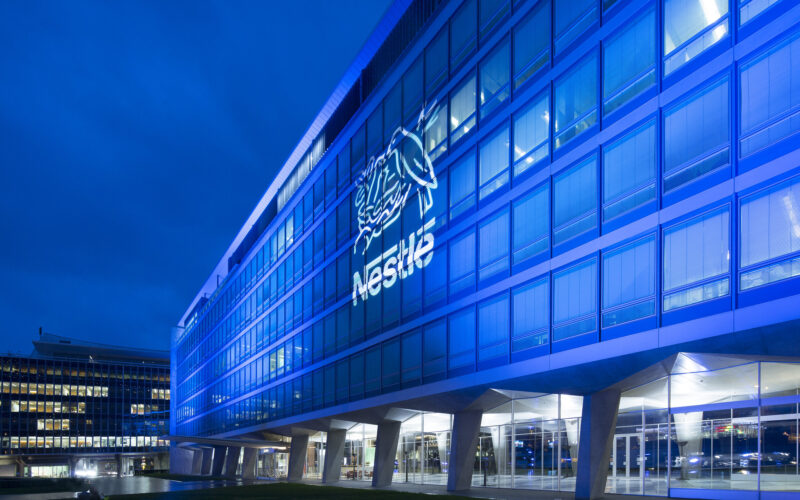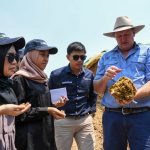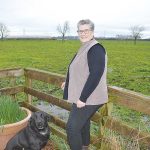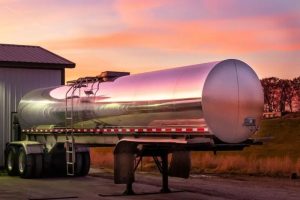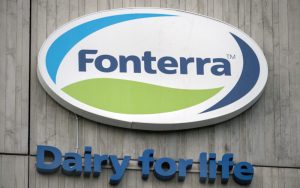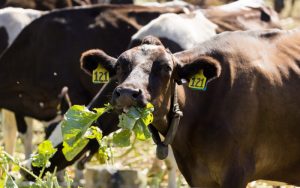
Chief dairy buyer says NZ is not moving fast enough to meet the company’s needs.
Nestlé global procurement category lead for dairy Bruno Spire has challenged the claim that New Zealand dairy farms have the lowest global carbon footprint.
Speaking via Zoom from Switzerland at the New Zealand Institute of Primary Industry Management conference at Mystery Creek, Spire said: “New Zealand has low emissions but not the lowest.”
European farming models, where cows are farmed in barns for large parts of the year, have more access to technologies to lower their emissions than New Zealand with its pasture-based farming model, he said.
“Our projections are showing that European and North American [farmers] have more opportunities to significantly reduce their emissions.
“In order to remain attractive, I believe the dairy industry in New Zealand must tackle this problem, but the good thing is that there are solutions.”
One of these is to improve productivity. While milk efficiency has improved in New Zealand, it is still behind other countries.
Pressed on this in a question-and-answer session following his presentation, Spire said that per-cow efficiency and productivity is the biggest opportunity for New Zealand to reduce its carbon emissions.
A big chunk of that comes from better cow nutrition, he said.
Rather than a threat, it is a great opportunity for farmers to become more efficient in milk production.
“Not only will they reduce their emissions and remain attractive to Nestlé, but they can also generate more revenue to make them more resilient to price volatility as well.”
Asked if decarbonisation could lead to more “industrial” farming practices with cows housed indoors as a trade-off, he said: “I don’t think consumers understand how meat, vegetables and milk are produced. Some are asking and some are willing to understand, but in general, they don’t really know.
“What they are asking is that the product is safe and that the product is sustainable.”

He said he understands the historical and practical reasons for New Zealand having an outdoor pasture-based farming model and said he was not implying farmers convert to a more confined model.
“It’s about how can we further improve the efficiency of this model to make it better and more resilient.”
Asked if Nestlé would pay a premium to farmers who undergo system changes, he acknowledged the challenges farmers face to become more sustainable.
“We have a very simple way of looking at it: no farmers, no milk, no Nestlé business.”
Nestlé is working with farmers globally to see how it can help finance these changes, he said.
Asked if New Zealand is moving fast enough to meet the needs of Nestlé he said: “The straight answer is no … but I must say that the quality of the discussions and the willingness and involvement of farmers of the dairy industry in New Zealand have just been fantastic.
“I can really see the difference and the quality in what we are doing today. Are we doing enough? No, we could always do more. Is it going in the right direction? Absolutely.”
As a food manufacturer, Nestlé relies on nature for the ingredients it needs to make its products. The company spends $20 billion on ingredients annually and dairy remains at the heart of this.
It buys its dairy ingredients from more than 40 countries and has a long relationship with New Zealand.
In 2020 it released its roadmap, which outlined its path to zero emissions. It spoke of how it collaborates with farmers and suppliers to work towards better farming systems.
The roadmap has the goal of Nestlé reducing its emissions by 20% by 2025 and 50% by 2030.
Two-thirds of its emissions are coming from where the ingredients are grown.
“Without achieving the reductions on dairy, Nestlé will not be able to achieve its overall decarbonisation objectives,” he said.
You can now read the most important #news on #eDairyNews #Whatsapp channels!!!
🇺🇸 eDairy News INGLÊS: https://whatsapp.com/channel/0029VaKsjzGDTkJyIN6hcP1K
